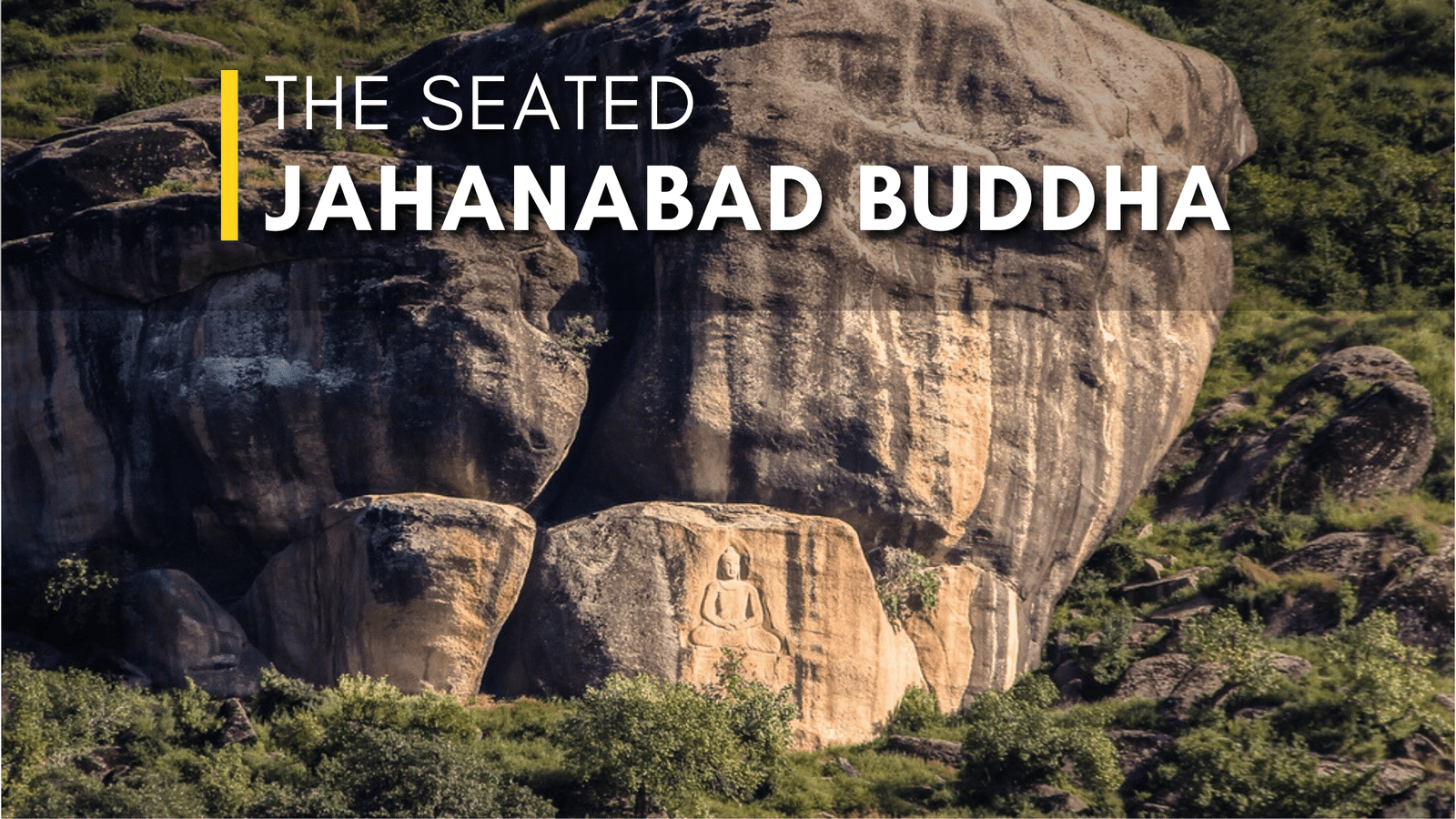
Jahanabad Buddha – Largest Seated Buddha of Swat Pakistan
Jahanabad Buddha Swat, also known as Budghat in the local language, is a 7th or 8th century rock carving of Mahatma Buddha located in the Swat Valley of Khyber Pakhtunkhwa, Pakistan. The presence of Jahanabad Buddha Swat Pakistan and other ancient artefacts in the Swat Valley highlights the historical richness of this region. There are said to be more than 200 historical sites scattered throughout the Swat Valley, with Jahanabad Buddha being one of the most significant.
Marc Aurel Stein, a British archaeologist, visited Swat Valley in 1926 to research the centuries-old Buddhist remains and the shreds of evidence of Alexander the Great’s encounters with the people of Swat. He has discussed this rock carving in his writings.
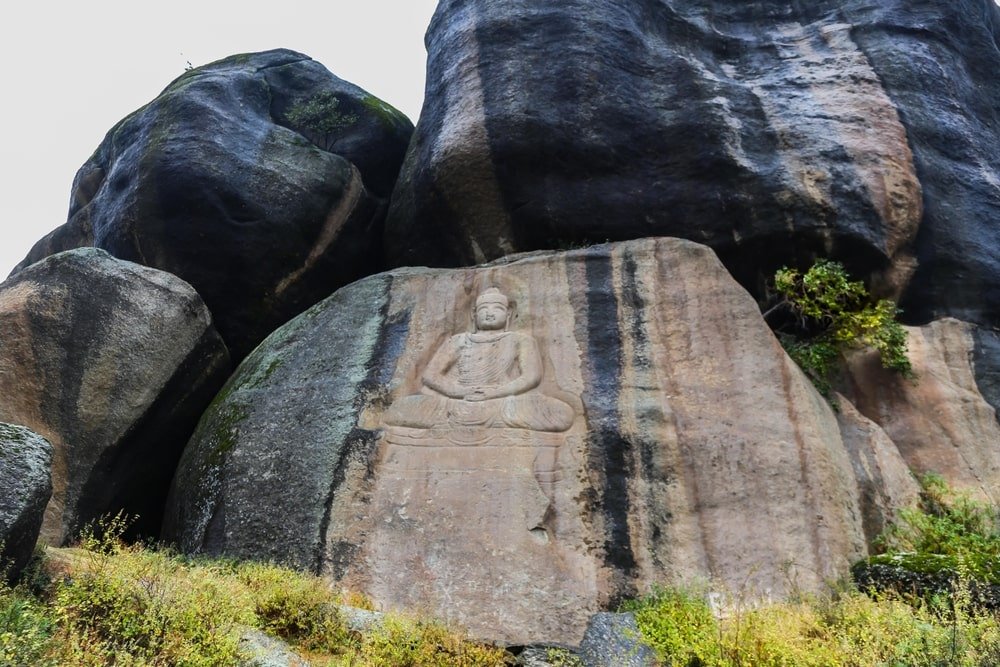
Features of Jahanabad Buddha:
The Jahanabad Buddha rock carving is the second-largest of its kind, following the Bamiyan Buddha carving in Afghanistan. Jahanabad Buddha is carved in a meditative form on a high red rock. The carving features narrowly opened eyes, an ushnisha (a small lump or a crown) atop the Jahanabad Buddha’s head, long earlobes with ear gauges, and a detailed flared robe around his body. The intricacies of the carving resemble the Gandharan era artefacts, suggesting it was most probably carved during that time.
The Jahanabad Buddha stands approximately 7 meters above the ground, with a head measuring 7 feet in length, while its body is around 10 feet tall. The head appears relatively larger in proportion as compared to its body. It is positioned at a good height from the ground, and the proportion makes sense if viewed from a specific angle beneath it.
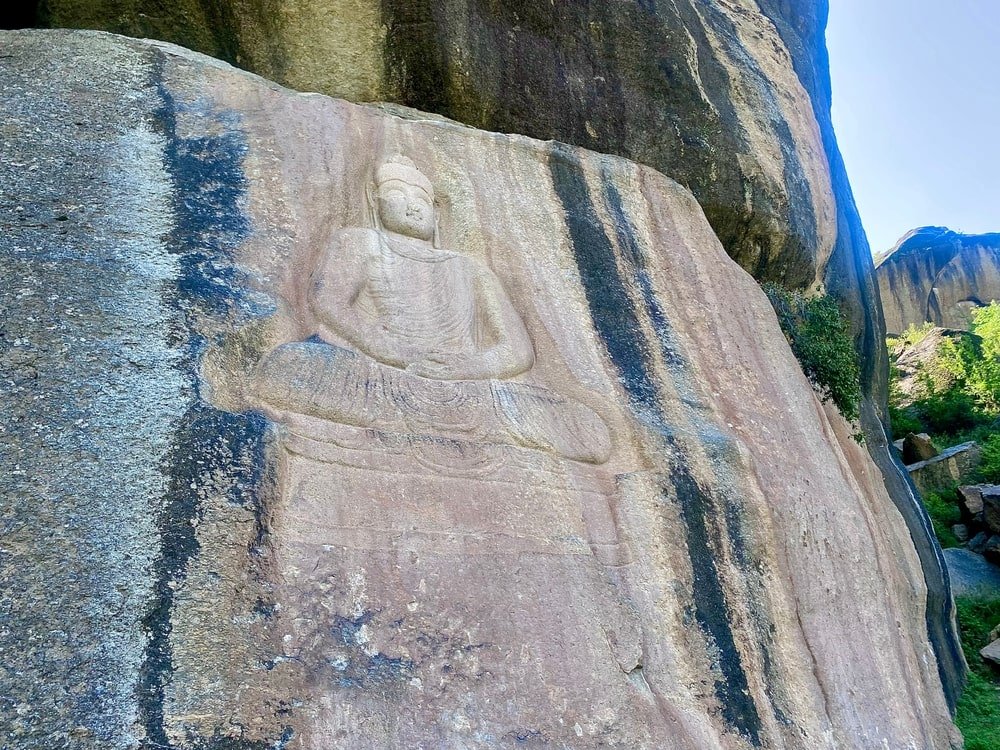
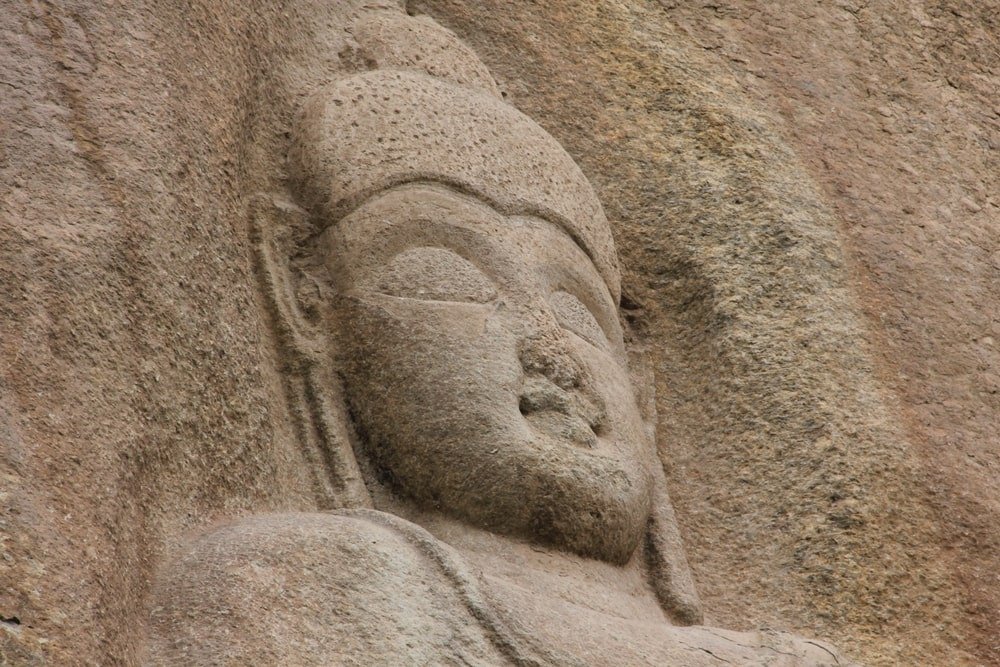
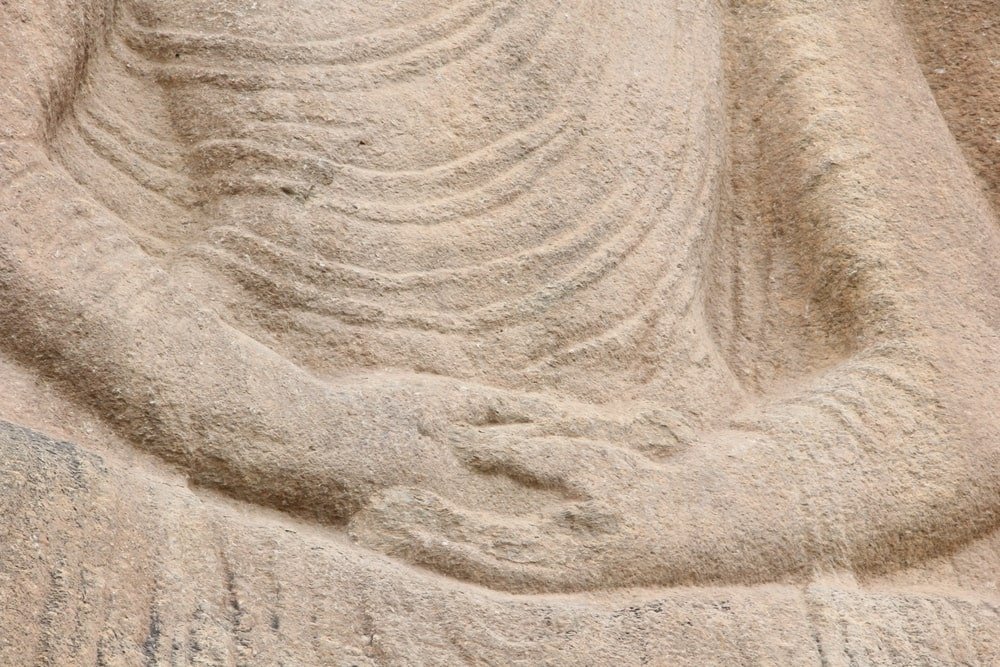
Location Of Jahanabad Buddha Swat Pakistan:
The Jahanabad Buddha faces westward, and due to its elevation, it seems to keep a dominant watchful eye on the wide open valley in front of it. It is about 1 km from the Jahanabad Village (also known as Shakhorai Village) and approximately 5 km from Manglor or Manglawar Town, which is located on the Behrain-Kalam road.
Visitors can park their cars on the Malam Jabba road coming from Manglor and embark on a trek along a muddy, paved track. The journey includes climbing a few ancient stairs on the way built during historic times. As you hike, you pass through village fields and enjoy the crisp air of this beautiful valley, with a stream of fresh water flowing nearby, emerging from the mountain above and eventually feeding into the Swat River afterwards. It is an inclined hike up to the rock carving.
Jahanabad Buddha – A Cultural Complex:
At the foothills of the Jahanabad Rock Carving, you will find the ruins of a Buddhist monastery along the path. There are also the remnants of a Buddhist Stupa atop the mountain. A track behind the rock leads to a cave located on the rear side of the carving, suggesting that this site may have served as a ritual complex for the Buddhist monks in prehistoric times.
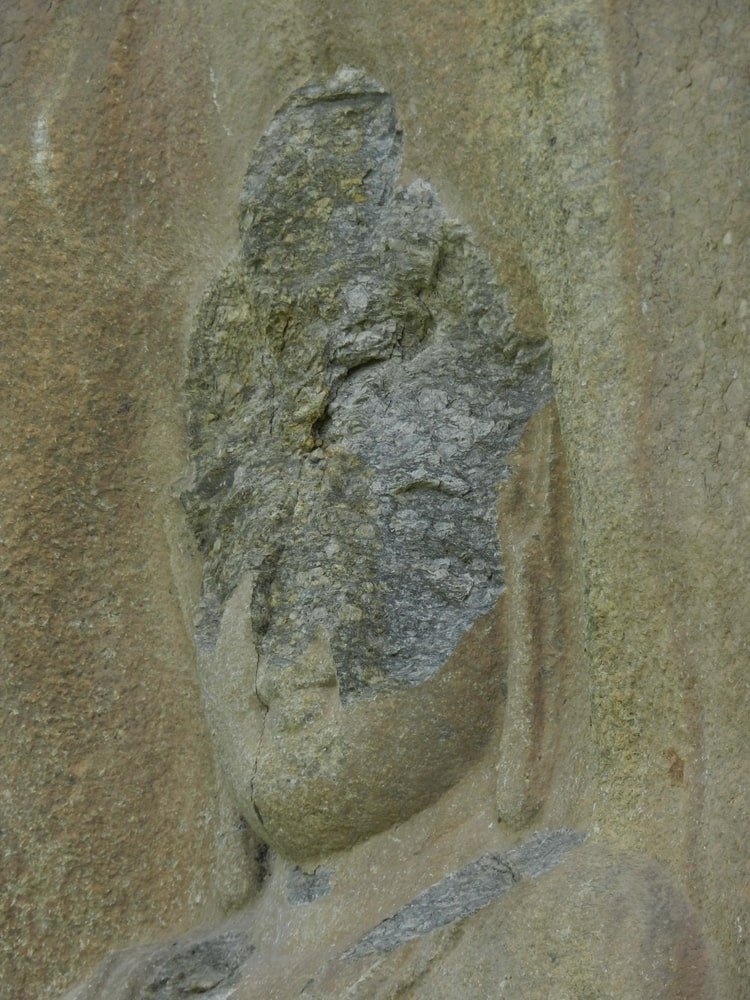
Jahanabad Buddha Damaged by Militants in 2008:
Unfortunately, the face of Buddha was terribly destroyed in 2008 by the Taliban Militants using missiles. The Buddha is located at a strategic position that it took 2 to 3 attempts to destroy and only the face was damaged. It was one of the worst eras for Swat Valley, and it adversely affected tourism in Swat Valley and Pakistan as a whole.
Restoration of Jahanabad Buddha:
However, thanks to the brave efforts of the Pakistani government and the Pakistan Army, the country was successful in pushing the militants back into Afghanistan. With the collaboration of the Government of Khyber Pakhtunkhwa and an Italian restoration team, the Buddha was restored by 3D technology and old visuals of the carving.
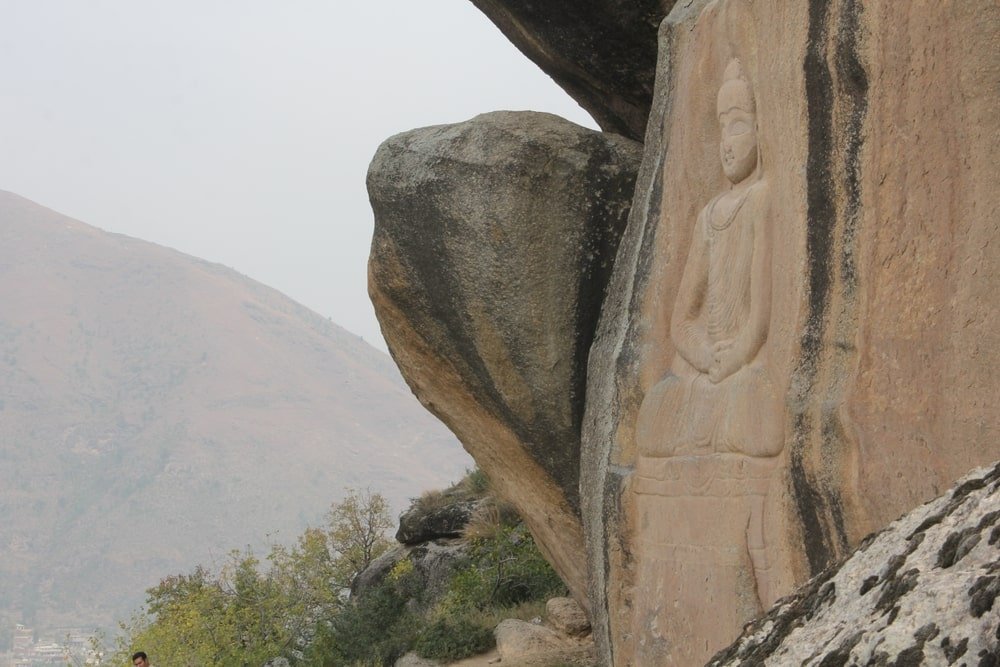
Efforts of KPK Government and Other Authorities in Swat:
The people and authorities of Swat Valley are taking great measures to preserve their highly important archaeological land and to promote worldwide tourism. They have also preserved tonnes of archaeological findings in a local museum in Saidu Shareef, the capital of Swat Valley. Also, in recent years, the construction of a 5-star Ski Resort in Malam Jabba (neighbouring valley) has boosted tourism to its heights. Swat Valley can become a pivot for religious tourism for Buddhists and archaeologists around the world.
